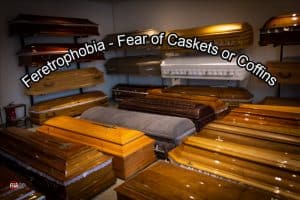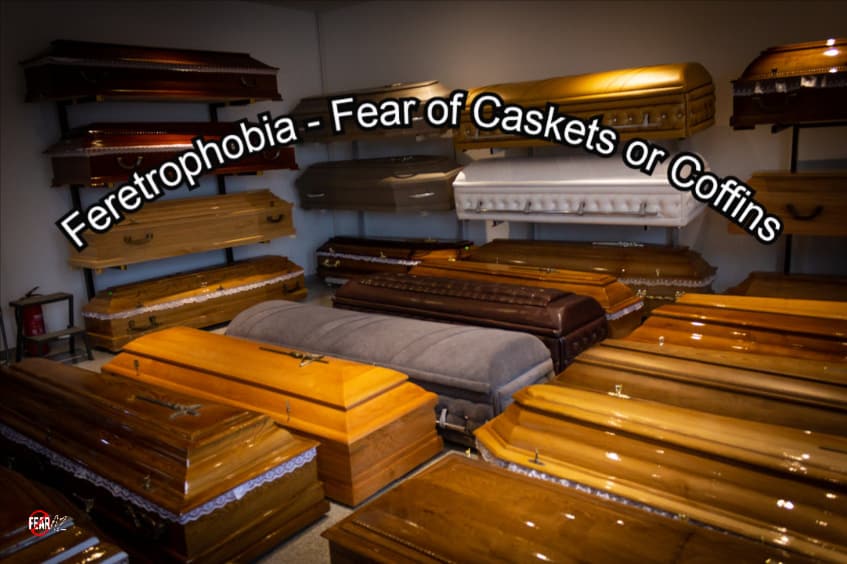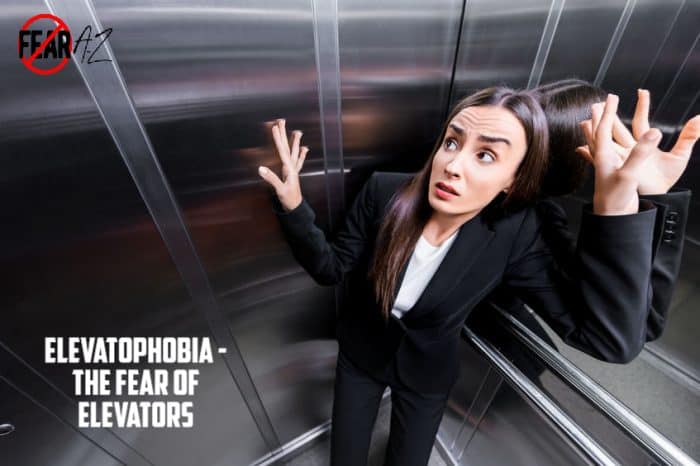Share This Article
Let’s Close the Lid on the Fear of Coffins
Is it nearly impossible for you to pay your last respects at someone’s funeral? Does the site or even the mere image of a casket send chills down your spine or make you sick?
Does an agonizing terror grip you by the throat at the sight of these finely chiseled boxes? Perhaps your blood runs cold at the sight of coffins—even if onscreen or in photos.
If any of these scenarios sound familiar, then there’s a high possibility you suffer from feretrophobia.
This fear of coffins can make it difficult to function in daily life. Yes, living with this phobia can be troublesome, but it’s not incurable. The first step in dealing with your fear is to acknowledge that you have it. Once you’ve done that, you’re on your way toward overcoming your fear of caskets. Read on to learn more.

What Is Feretrophobia about and What Causes It?
Feretrophobia is the fear of coffins. The term feretrophobia comes from the Greek words feretro, meaning coffin, and Phobos, meaning fear. The fear of coffins is sometimes mistaken for taphophobia or necrophobia. This is because coffins are a symbol of death and are used to bury the dead.
The feeling that accompanies this fear can be so gripping at times that it interferes with your daily activities. That’s when this fear becomes a phobia.
The exact cause of feretrophobia is unknown, however, a central cause for any phobia is genetic makeup. If your family has a history of mental disorders, you have a greater risk of developing a phobia.
Traumatic events of the past may also result in a phobia. An example of such an event could be the loss of a loved one. Their burial, last rites, and watching them leave forever could have caused you to develop this phobia.
Upbringing plays a significant role as well in development of a phobia. Your family’s influence, or the myths and stories you heard while growing up, can shape the way you see a casket. Continued exposure to such ideas can gradually turn the fear into a phobia.
However, this doesn’t mean your phobia is incurable. If you suffer from such a condition, don’t think twice before seeking medical help. There’s no need to feel embarrassed or ashamed. Many famous people, including George Washington himself, have experienced the fear of feretrophobia.
Symptoms of Feretrophobia
Feretrophobia is one of the lesser-known phobias. That’s why the diagnosis of this phobia can be challenging. Still, one should not take phobias lightly. All phobias can limit a person’s daily activities to some degree. It can also emerge as the root cause of anxiety, panic attacks, and depression.
Everyone is different, and so are all the types of phobias and their symptoms. Symptoms also vary depending on the severity of the individual’s experience.
Feretrophobia is an anxiety disorder. Those with this fear of coffins may experience at least some of the physical and mental/emotional symptoms listed below.
Physical Symptoms
The most commonly seen symptom in people with feretrophobia, or the fear of coffins, is panic attacks. These panic attacks can be distressing and erupt without prior warning. The occurrence of a panic attack or anxiety can cause physical symptoms such as those listed below:
- sweating
- hot flushes and chills
- rapid heartbeat (tachycardia)
- trembling
- chest pain or tightness in the chest
- shortness of breath or difficulty breathing
- a sensation of butterflies in the stomach
- nausea
- feeling faint
- a choking sensation
- numbness or pins and needles
- headaches and dizziness
- dry mouth
- ringing in the ears
- a rise in blood pressure
- hyperventilation
- chest tightness, chest pain, and difficulty breathing
- confusion or disorientation
Mental/Emotional Symptoms
In severe cases, a panic attack triggered by fear can have mental and emotional consequences too. Individuals may experience one or all of the following symptoms:
- fear of losing control
- fear of passing out
- feelings of dread
- fear of dying
- fear of harm or illness
- guilt, shame, self-blame
- withdrawing from others
- feeling sad or hopeless
- feeling disconnected
- confusion, difficulty concentrating
- anger, irritability, mood swings
- anxiety and fear
Self-Help for Feretrophobia
Taking good care of yourself is one of the most effective ways to overcome any fear. Understanding how to help yourself will allow you to control your fear of coffins before it worsens.
You can practice relaxation techniques like meditation, deep breathing, positive affirmations, and self-talk. Any practice that brings peace and calms you can help.
Another helpful approach is Kidlin’s law. It says if you can write down the problem, you can solve half the matter. This law can be helpful in dealing with problematic thoughts. Such thoughts are usually part of the initial stage of the development of a phobia.
Professional Help for Feretrophobia
Someone suffering from feretrophobia might not feel the need for treatment as long as they can avoid caskets or coffins. This gives them a feeling of being in control. However, that is far from true.
Feretrophobia doesn’t need the physical presence of a casket. A scene in a movie, an image in a magazine, or a video on the web is enough to trigger panic.
As a result, individuals should seek professional help whenever possible. When you understand what’s happening, you can better manage the fear and keep it from controling your life.
All phobias can be treated, but there is no one single treatment that works for all. Nor is there any guarantee which one will work. It all depends on the individual and the severity of the phobia. In many cases, a combination of treatments may be more effective.
Talking therapies in particular can be effective at treating feretrophobia, but here are the more widely used treatments:
- Exposure therapy
- Cognitive behavioral therapy (CBT)
- Medications
In exposure therapy, the patient sees more of the object of fear over a given period. Greater exposure to the source of fear makes it less effective over time.
CBT is another form of treatment used to help people with generalized anxiety disorder (GAD). It’s also used to treat obsessive compulsive disorder (OCD) and other similar conditions. In CBT, the therapist helps the patient uncover the cause of their fear and work toward looking at it in a different way.
While medications are an option for treating symptoms of phobia, they are not a treatment for the phobia itself. Doctors sometimes prescribe medication to treat the effects of phobias such as anxiety or depression.
Avoiding Feretrophobia Altogether
Although phobias are treatable, there is no one single treatment.
Most phobias result from traumatic experiences or genetics. You can’t avoid these two factors, but what you can do is train your mind. Yoga, meditation, exercise, healthy eating, and healing practices can help you manage your fear better.
Final Thoughts
Phobias are common and not a source of embarrassment. The keys to overcoming a phobia are timely diagnosis, treatment, and self-care.
Don’t be hard on yourself. Talk to a trusted friend or family member about your fears. Take it slowly until the fear gradually fades. Be aware, acknowledge it, and work on your fear to get the better of it.




